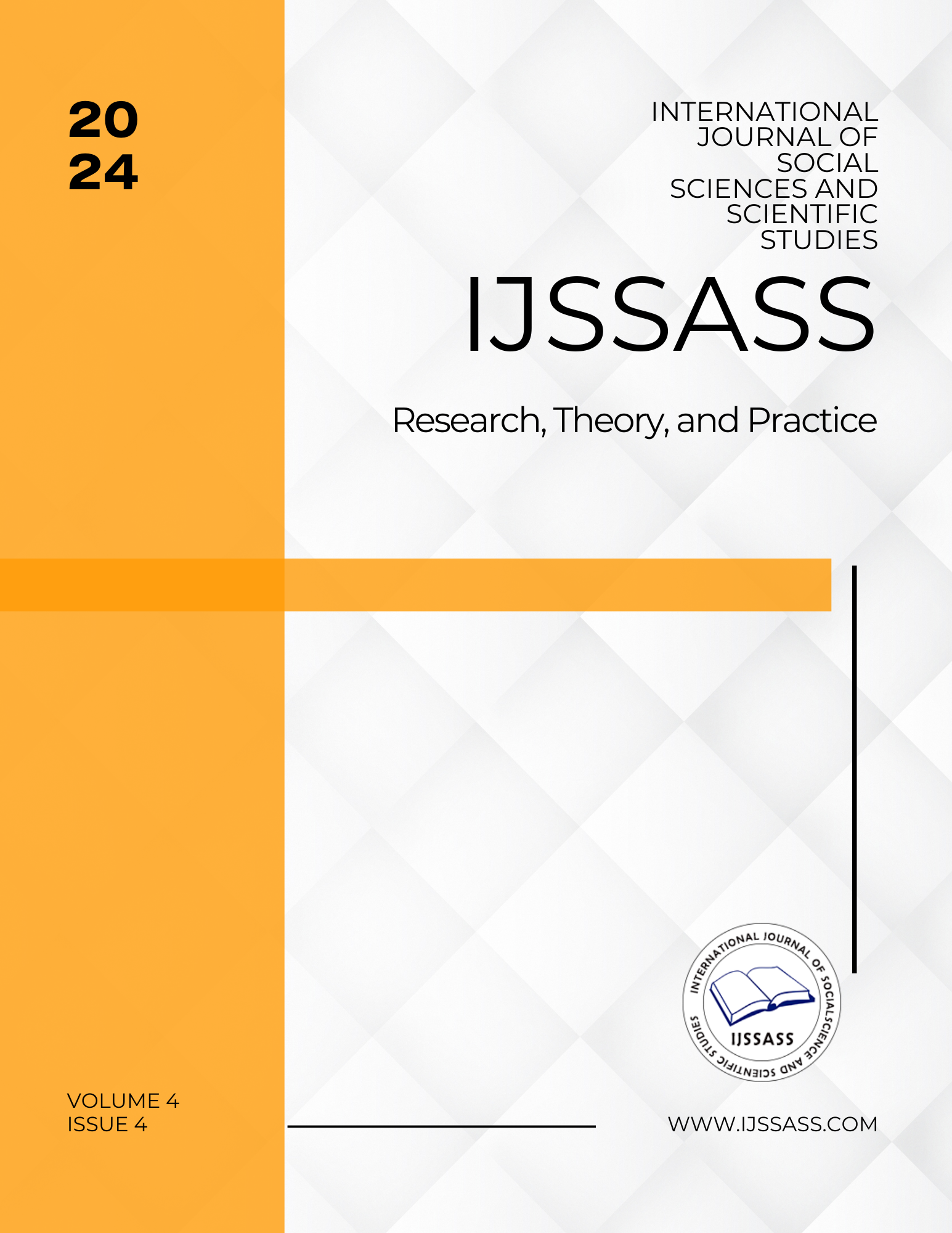ATTRACTIVENESS OF POTENTIAL CANDIDATES TO POLICE OFFICER PROFESSION IN THE CITY OF LUBUMBASHI
Keywords:
Hr Marketing, Employer Brand Equity, Organizational Attractiveness, Potential CandidatesAbstract
The present research, concerning the HR Marketing field, cared about the notion of organizational attractiveness (OA) defined as the candidate intention to apply or to accept potential offers from a particular employer (Rampl & Kenning, 2014), and sought to identify the factors explaining the low attractiveness of candidates having the study level required by the law (at least six years of secondary studies). It is about attractiveness towards police officer profession.
A survey, using an electronic questionnaire, was carried out among a sample of 267 persons living in Lubumbashi city (potential candidates for the profession of police officer), at the end of which the results showed that there is a positive and significant relationship between employer brand equity (EBE) and organizational attractiveness (otherwise, the negative brand image of the national congolese police is a significant determinant of the potential candidates low attractiveness). Regarding the specific dimensions of the EBE, only the factor named « Interest value » could appear as a significant determinant of organizational attractiveness. The desires of potentials candidates are therefore turned towards an organization encouraging innovation and creativity. This can be explained by the fact that most of them are young people born during a period and in a context corresponding to a lot of technological innovations.
References
Agrawal, & Swaroop. (2009). “Effect of employer brand image on application intentions of B-School undergraduates”. Vision-The Journal of Business Perspectives, Vol. 13, N° 3, p. 41-49.
Alnıaçık. (2012). Identifying dimensions of attractiveness in employer branding: effects of age, gender, and current employment status. Procedia-Social and Behavioral Sciences, 58, 1336-1343.
Benraiss-Noailles, & Viot . (2017). L’ attractivité des entreprises low-cost? Le rôle du CapitalMarque Employeur. Revue Française de Gestion, Lavoisier, 2017, Les stratégies low-cost.
Berthon, Ewing , & Hah . (2005). “Captivating company: Dimensions of attractiveness in employer branding”. International Journal of Advertising, Vol. 24, n°2, p. 151-172.
Cable, & Turban. (2001). Establishing the dimensions, sources and value of job seekers' employer knowledge during recruitment. In Research in personnel and human resources management. Emerald Group Publishing Limited, pp. 115-163.
Cable, & Turban. (2003). “The value of organizational reputation in the recruitment context: A brand equity perspective”. Journal of Social Applied Psychology, Vol. 33, n°11.
Collins, & Stevens. (2002). “The relationship between early recruitment-related activities and the application decisions of new labor-market entrants: A brand equity approach to recruitment”. Journal of Applied Psychology, Vol. 87, n°6,, p. 1121-1133.
Dutton, & Dukerich. (1994). Organizational Images and Member Identification. Administrative Science Quarterly, Vol. 39, No. 2, 239-263.
Erhart, & Ziegert . (2005). « Why are Individuals Attracted to Organizations? ». Journal of Management.
Généreux, J. (2016). Economie Politique : les fondamentaux. Paris: Hachette Supérieur.
Herzberg. (1968). "One more time : how do you motivate employees" (traduction française : "à la recherche des motivations perdues"). Harvard Business Review.
Highhouse, Zickar, Thorsteinson, Stierwalt, & Slaughter . (1999). “Assessing company employment image: An example in the fast food industry”. Personnel Psychology, Vol. 52, n°1, p. 151-172.
Knox, & Freeman . (2006). “Measuring and managing employer brand image in the service industry”. Journal of Marketing Management, Vol. 22, n°7/8,, p. 695-716.
Kristof. (1996). « Person-organisation fit : An integrative review of its conceptualizations, measurement and implications ». Personnel Psychology .
Lievens, & Highhouse . (2003). “The relation of instrumental and symbolic attributes to a company’s attractiveness as an employer”. Personal Psychology, Vol. 65,, p. 75-101.
Rampl, & Kenning. (2014). Employer brand trust and affect: Linking brand personality to employer brand attractiveness. European Journal of Marketing, Vol. 48, p. 218-236.
Rynes. (1991). Recruitment, job choice, and post-hire consequences: A call for new research directions. In M. D. Dunnette & L. M. Hough (Eds.), Handbook of industrial and organizational psychology, vol. 2, p. 399–444.
Sem, & Cornet. (2018). Methodes de recherche en sciences économiques et de gestion. Editions universitaires européennes.
Shahzad, Khurran, Asmia, Khan, & Zafar. (2011). “Relationship between perceived employer branding and intention to apply: evidence from Pakistan”. European Journal of Social Sciences, Vol. 18, N° 3, p. 462-467.
Sutherland, Torricelli , Daniele , & Karg , F. (2002). “Employer of choice branding for knowledge workers”. South African Journal of Business Management, Vol.33, N° 4, p. 13-20.
Tajfel, & Turner. (1979). “An integrative theory of intergroup conflict”, in Austin W.G. and Worchel S. (eds.);. The social psychology of intergroup relations, Monterey, CA: Brooks/Cole,, p. 33-47.
Taylor, & Bergmann . (1987). “Organizational recruitment activities and applicants' reactions at different stages of the recruitment process”. Personnel Psychology, Vol. 40, n°2, p. 261-285.
Constitution de la République Démocratique du Congo du 18 Février 2006.
Décret-loi n°002/2002 du 26 Janvier 2002 portant création de la Police nationale congolaise.
Published
How to Cite
Issue
Section
License
Open access and copyright policy
The journal offers access to the contents in the open access system on the principles of non-exclusive license Creative Commons (CC BY 4.0). Thus, the authors are required to agree with that policy. In this regard, authors will be asked to complete a submission card with a copyright transfer agreement that specifies detailed descriptions of the copyright transfer. The submission card is provided via email before the publication.
Publication fee
IJSSASS is a self-funded journal. For this reason, the journal handles a publication fee. The current publication fee is provided on the journal’s Web site in the section Instruction for authors. Thus, the publication fee that is required for manuscript processing is clearly stated on our website




